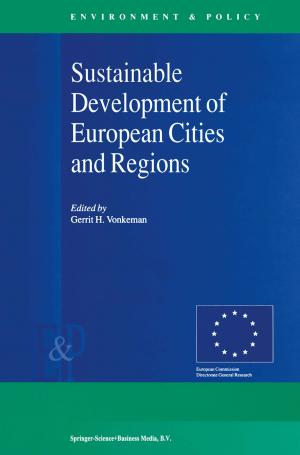Changes of Atmospheric Chemistry and Effects on Forest Ecosystems
A Roof Experiment without a Roof
Nonfiction, Science & Nature, Science, Biological Sciences, Ecology, Technology, Agriculture & Animal Husbandry| Author: | ISBN: | 9789401590228 | |
| Publisher: | Springer Netherlands | Publication: | March 9, 2013 |
| Imprint: | Springer | Language: | English |
| Author: | |
| ISBN: | 9789401590228 |
| Publisher: | Springer Netherlands |
| Publication: | March 9, 2013 |
| Imprint: | Springer |
| Language: | English |
This volume summarises the result of an interdisciplinary research programme entitled `Rehabilitation of the Atmosphere of the New States of Germany - Effects on Terrestrial Ecosystems'. Before the unification of Germany, emission loads of SO2 and dust particles were up to 18-fold higher in East than in West Germany. However, emission rates have decreased significantly since reunification in 1990, due to the breakdown of a large number of industrial and particularly lignite- fired powerplants and the implementation of clean air technologies. In order to study the effects of these dramatic changes in atmospheric chemistry on terrestrial ecosystems, comprehensive field studies were conducted in pine forest ecosystems along an historic gradient of atmospheric deposition rates in the northeastern lowlands of Germany. The fast and dramatic reduction of dust particle and SO2 emissions offers a unique opportunity to test the role of SO2 and alkaline particle deposition with regard to changes or damage to forest ecosystems and whether the forest stands return to a state of resilience. In this respect, this ecosystem experiment can be looked upon as a roof experiment without a roof.
This volume summarises the result of an interdisciplinary research programme entitled `Rehabilitation of the Atmosphere of the New States of Germany - Effects on Terrestrial Ecosystems'. Before the unification of Germany, emission loads of SO2 and dust particles were up to 18-fold higher in East than in West Germany. However, emission rates have decreased significantly since reunification in 1990, due to the breakdown of a large number of industrial and particularly lignite- fired powerplants and the implementation of clean air technologies. In order to study the effects of these dramatic changes in atmospheric chemistry on terrestrial ecosystems, comprehensive field studies were conducted in pine forest ecosystems along an historic gradient of atmospheric deposition rates in the northeastern lowlands of Germany. The fast and dramatic reduction of dust particle and SO2 emissions offers a unique opportunity to test the role of SO2 and alkaline particle deposition with regard to changes or damage to forest ecosystems and whether the forest stands return to a state of resilience. In this respect, this ecosystem experiment can be looked upon as a roof experiment without a roof.















